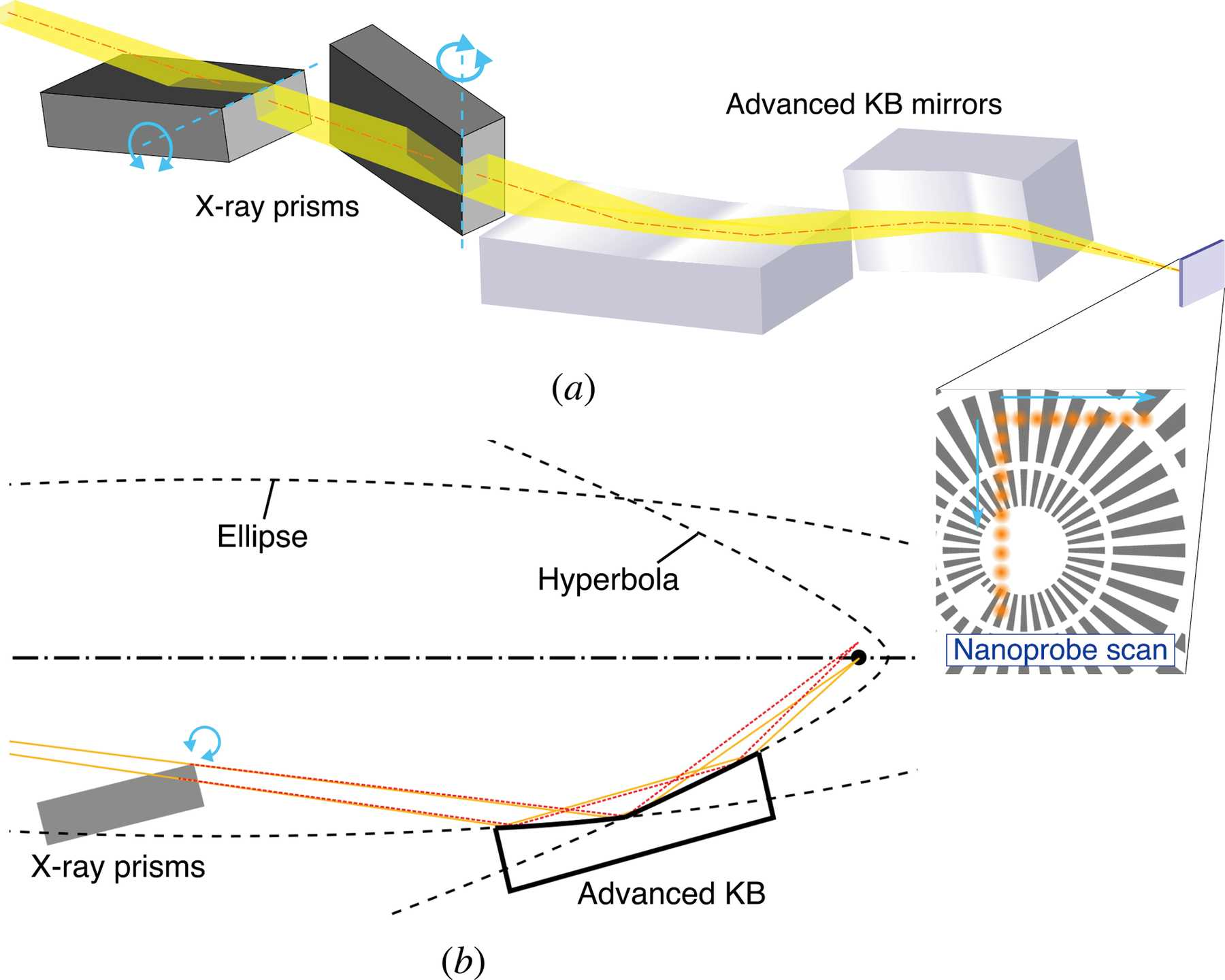
理研:走査型X線顕微鏡の新技術:X線ナノプローブスキャナー(動画):
RIKEN: New tech of scanning X-ray microscope: X-ray nanoprobe scanner:
RIKEN:扫描X射线显微镜新技术:X射线纳米探针扫描仪
ー試料を動かさず精度20倍でスキャンー
理化学研究所
名古屋大学
大阪大学共同研究グループは、走査型X線顕微鏡用の新しい高精度スキャン技術「X線ナノプローブスキャナー」を開発した。
- 試料を動かさずにスキャンでき、
- スキャン精度は原子数個分1ナノメートルを達成、
- 従来手法の10―20倍を実現した。
X線ナノプローブスキャナー:
- ナノ分解能のX線顕微鏡観察や、
- X線分光分析の高度化に向け。
- 高精度スキャン技術への寄与が期待される。
X線プリズム
反射型X線レンズX線プリズム:
「X線プリズム」は、X線領域で機能する屈折プリズムである。
X線プリズムにより、X線の進行方向を1000分の1度レベルの超微小角度で曲げる。
反射型X線レンズ:
X線の反射現象を使って集光・結像する光学素子「反射型X線レンズ」を組み合わせた。
反射型X線レンズでX線を50ナノメートルまで細く集光して、試料に照射する。
スプリング8:
大型放射光施設「スプリング8」ビームラインで、試料を動かさずにスキャンした結果。
最小構造50ナノメートルを解像するX線顕微鏡画像を取得できた。
従来の走査型X線顕微鏡:
- 走査型X線顕微鏡では、
- 「X線プローブと試料の相対的な位置関係」を、
- 高精度にスキャンする必要がある。
従来より、X線を曲げるのは難しいとされていた。
その為、X線ではなく、試料をスキャンする装置が主流だった。
ニュースイッチ
(IUCr) Hard X-ray nanoprobe scanner
X-ray scientists are continually striving to improve the quality of X-ray microscopy, due to the fact that
the information obtained from X-ray microscopy of materials can be complementary to that obtained from optical and electron microscopes.
In contrast to the ease with which one can deflect electron beams, the relative difficulty to deflect X-ray has constrained the development of scanning X-ray microscopes (SXMs) based on a scan of an X-ray small probe.
This restriction
has caused severe complications that hinder progress toward achieving ultimate resolution.Here,
a simple and innovative method for constructing an SXM equipped with a nanoprobe scanner is proposed.The nanoprobe scanner
combines X-ray prisms and advanced Kirkpatrick–Baez focusing mirrors.
By rotating the prisms on the order of degrees, X-ray probe scanning with single-nanometre accuracy can be easily achieved.
The validity of the concept
was verified by acquiring an SXM image of a test pattern at a photon energy of 10 keV, where 50 nm line-and-space structures were resolved.This method is readily applicable
to an SXM with a single-nanometre resolution and will assist effective utilization of increasing brightness of fourth-generation synchrotron radiation sources
https://journals.iucr.org/m/issues/2021/05/00/ro5029/index.html